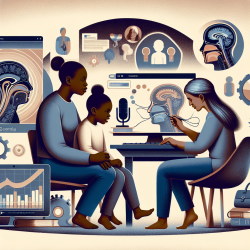Selective Posterior Rhizotomy (SPR) is a neurosurgical procedure primarily performed to reduce spasticity in the lower extremities of children with spastic cerebral palsy. However, recent research indicates that the benefits of SPR extend beyond just motor function improvements. According to a study titled "Oral-Motor and Respiratory Changes in Children With Spastic Cerebral Palsy Following Selective Posterior Rhizotomy" by Phyliss Flower, SPR can also lead to significant improvements in speech intelligibility, respiratory function, and oral-motor skills.
For practitioners working with children who have spastic cerebral palsy, understanding these additional benefits is crucial. Incorporating this knowledge into therapy sessions can optimize outcomes and encourage further research into this transformative procedure.
Key Findings from the Research
The study observed a 7-year-old male patient with spastic quadriplegia who underwent SPR. The patient exhibited improvements in several areas:
- Speech Intelligibility: The child showed noticeable improvements in intelligibility by targeting more final consonants and expanding consonant substitutions closer to target phonemes.
- Oral-Motor Skills: Improved volitional tongue movements and more frequent spontaneous retraction of the tongue, lip closure, and swallowing.
- Respiratory Control: The child demonstrated better respiratory control, consistently using three-word utterances and showing more spontaneous speech.
- Drooling: There was a significant decrease in drooling, attributed to improved mouth closure and swallowing frequency.
- Feeding: While still demonstrating immature eating patterns, the child showed a decrease in choking incidents and could now eat foods he previously choked on.
Implications for Practitioners
Practitioners should consider the following when working with children who have undergone SPR:
- Postural Control: Improved sitting posture can enhance respiratory function and speech production. Ensure the child has proper seating and postural support.
- Comprehensive Assessment: Regular assessments of oral-motor and respiratory functions are essential. Use both perceptual and instrumental measures to gather comprehensive data.
- Interdisciplinary Approach: Collaboration with a multidisciplinary team, including speech-language pathologists, occupational therapists, and physiotherapists, can provide holistic care and maximize the benefits of SPR.
- Parental Involvement: Encourage parents to be actively involved in the child's therapy. Their observations and reports can provide valuable insights and support ongoing improvements.
Encouraging Further Research
The findings from this study highlight the need for more rigorous research to explore the full range of benefits associated with SPR. Future studies should aim to:
- Include larger sample sizes to validate findings.
- Utilize controlled research designs to rule out confounding variables such as natural developmental progress.
- Employ both perceptual and instrumental measures for a comprehensive assessment of speech and oral-motor functions.
- Document changes over extended periods to understand long-term effects.
By continuing to investigate the multifaceted benefits of SPR, practitioners can develop more effective treatment plans and improve the quality of life for children with spastic cerebral palsy.
To read the original research paper, please follow this link: Oral-Motor and Respiratory Changes in Children With Spastic Cerebral Palsy Following Selective Posterior Rhizotomy.










